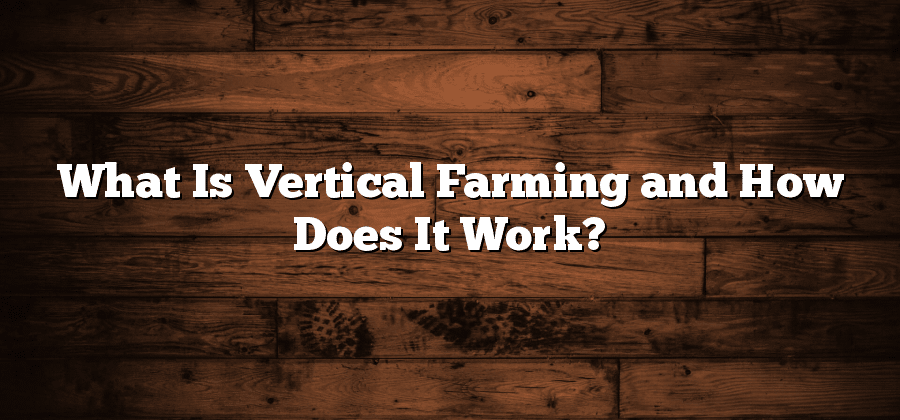Advantages of Vertical Farming
Vertical farming offers several significant advantages over traditional farming methods. Firstly, by utilizing vertical space, these farms can maximize their production on a smaller footprint. This is especially beneficial in urban areas where land is limited and expensive. Additionally, vertical farming allows for year-round cultivation, independent of weather conditions. By controlling the environment within the farm, crops can be grown consistently and efficiently, reducing the risk of crop failure due to adverse weather events.
Moreover, vertical farming significantly reduces the need for pesticides and herbicides. By implementing advanced hydroponic or aeroponic systems, which use nutrient-rich water or air respectively, the reliance on chemical-based fertilizers is greatly reduced. This not only makes the produce healthier but also minimizes the environmental impact of farming. Furthermore, vertical farming is highly efficient in its use of resources such as water and energy. Through the implementation of advanced automation and precision control, these farms can optimize the utilization of resources, minimizing waste and maximizing productivity.
Types of Crops Grown in Vertical Farms
Vertical farming offers a unique opportunity to grow a wide variety of crops in a controlled environment. With advancements in technology and innovative farming techniques, vertical farms can now cultivate different types of crops regardless of the traditional constraints of climate and seasons. From leafy greens and herbs to fruits and vegetables, vertical farms have the potential to revolutionize the agricultural industry by providing a reliable and sustainable source of fresh produce.
One of the most popular crops grown in vertical farms is lettuce. Lettuce requires plenty of space to grow, making it an ideal candidate for vertical farming where multiple layers of crops can be cultivated on top of each other. Other leafy greens such as spinach, arugula, and kale are also commonly grown in vertical farms due to their high demand and nutritional value. Additionally, herbs like basil, parsley, and mint thrive in the controlled conditions of vertical farms, ensuring a year-round supply for culinary enthusiasts and herbal medicine practitioners alike.
The Role of Technology in Vertical Farming
The efficiency and success of vertical farming heavily rely on the use of advanced technology. Technology plays a crucial role in ensuring optimal conditions for plant growth and maximizing crop yield. In vertical farms, automated systems are employed to monitor and control vital environmental factors such as light, temperature, humidity, and nutrient levels.
One of the key technologies employed in vertical farming is LED lighting. Unlike traditional farming, where sunlight is the primary source of light, vertical farms utilize specific LED lights that emit wavelengths ideal for plant growth. These lights can be programmed to mimic daylight cycles, providing the plants with the required light intensity and duration. Furthermore, LED lighting is energy-efficient and does not generate excessive heat, making it a sustainable and cost-effective option for vertical farms.
Key Components of a Vertical Farm
The success of a vertical farm lies in its key components, which are essential for optimal plant growth and efficient cultivation. One fundamental component is the vertical growing system, designed to provide the plants with the necessary support and growing space within a limited footprint. These systems often employ stacked trays or shelves, allowing crops to be grown vertically, maximizing space utilization.
Another crucial component of a vertical farm is the lighting system. Since vertical farms operate in indoor environments, artificial lighting plays a vital role in ensuring that plants receive sufficient light for photosynthesis. High-quality LED lights are commonly used in vertical farms due to their energy efficiency and ability to emit specific wavelengths that optimize plant growth. The lighting intensity and spectrum can be adjusted to suit the needs of different crops, resulting in improved productivity and quality.
Vertical Farming Techniques
Vertical farming techniques have revolutionized the way we grow crops, maximizing yield and efficiency. One of the primary techniques used in vertical farming is hydroponics. This method involves growing plants in nutrient-rich water without the need for soil. By providing the plants with the exact nutrients they require, hydroponics allows for faster growth and higher productivity. Additionally, the controlled environment of vertical farms eliminates the need for pesticides and herbicides, making hydroponics an environmentally friendly and sustainable technique.
Another popular technique in vertical farming is aeroponics. This method involves growing plants in misted air, with their roots suspended in the air and regularly misted with a nutrient solution. This technique promotes rapid and healthy growth by providing plants with ample oxygen and nutrient-rich water. The efficient use of water and the absence of soil make aeroponics particularly suitable for vertical farming, as it allows for the cultivation of a wide range of crops in a limited space. Moreover, aeroponics reduces reliance on land and conserves resources, making it a viable solution to the growing global food demand.






